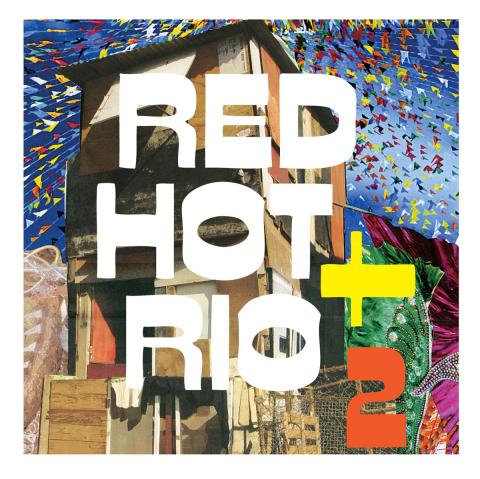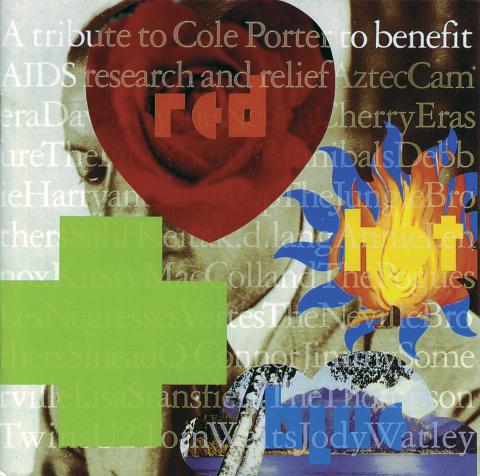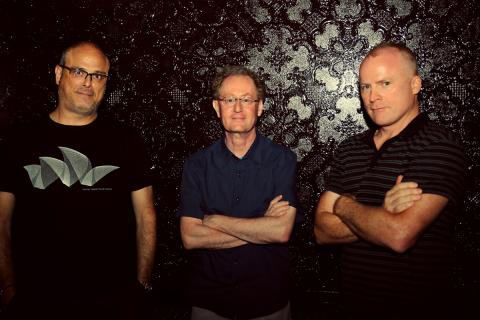
The co-founder of the not-for-profit New York-based Red Hot Organization had enjoyed a successful run raising funds for AIDS awareness commencing with the 1990 album, Red, Hot + Blue, a star-studded gathering of artists covering Cole Porter tunes that sold over 1 million copies and set the stage for a series of albums that tackled different musical genres and their respective audiences over the next 12 years.
But economic hardship combined with the changing music industry landscape had made it a difficult climate in which to raise funds. By the end of the ‘90s, “Red Hot’s whole economic model fell apart," Carlin tells www.samaritanmag.com.
It became very difficult to sell anything. The Internet came and took the underpinnings out of the economic engine of the music industry in general. So we sort of shuttered the company around 2003, when we did Red Hot + Riot. I really thought that was going to be the last record that we did.”
Until that point, Carlin and his Red Hot Organization hit a nerve with their records; donating over $10 million U.S. in proceeds raised to different HIV/AIDS charities and relief efforts all over the world.
“I started this organization with the idea that AIDs is a preventable disease, “ says Carlin,” a former professor of art and popular culture and entertainment lawyer. “The key to the prevention at the time was raising awareness and modifying the behaviour of young people. And my perception was that a lot of the official ways of doing this — government health information and the traditional channels — was not actually reaching the people most at risk.
“I was really stuck on this idea that young people were taking their behavioural clues from pop culture and from pop stars, so that the way to raise awareness — particularly in 1989-90 when I started — was to remove the stigma and bring the issue out in to the open, by having people like U2 and David Byrne and Annie Lennox throw their hats into the ring and talk about it. It was a problem that all people needed to deal with — not something that needed to be hidden away.”
Carlin began a new digital development company in Red Hot’s wake called Funny Garbage to build websites and create interactive applications, and hired an assistant named Aaron Dessner.
Working with Carlin at Funny Garbage for seven years before his band The National took off, Dessner decided to resurrect the Red Hot series in 2009 with his brother Bryce, producing the indie-driven Dark Was The Night, gathering such artists as Feist, Bon Iver, Arcade Fire, Sharon Jones and others to contribute to a double CD that raised over $1.2 million for charity from worldwide sales.
“Dark Was The Night bumped the company back into being,” Carlin acknowledges.
In June, the volunteer-driven Red Hot Organization issued their second effort since the revival — and 16th overall — with the double-disc Red Hot + Rio 2, which focuses on Brazil’s Tropicalia movement and features such pairings as Beck with Seu Jorge and David Byrne with Caetano Veloso.
Carlin says that the Red Hot campaigns have evolved as “the trajectory of the disease changed dramatically.”
“That period in the late ‘80s and early ‘90s was sort of the lightning rod of AIDS activism, particularly in the gay community, “ he notes. “By the mid-90s, once the drugs were available to allow people to live with HIV infection, it really moved into the developing world and into minority populations in North America.
“One of the first shifts for Red Hot was, ‘How do we address these communities, and do projects that were really demographic audience-based?’”

“The first challenge is the economic model of Red Hot from the beginning has been like a entrepreneurial production company that is charity not-for-profit: We basically come up with an idea. We get a couple of artists interested, and then I go out and pre-sell the rights to a record label, or, in the ‘90s, I would pre-sell the rights to video distribution companies to do the TV material.
“We get a recording advance, just like a band, from a label, with the understanding that they will be our marketing and distribution partners. We go out and make the record with that advance. The record label gets to recoup their out-of-pocket costs off the top, and then we distribute the adjusted gross of profits to the AIDS awareness cause.
“But it’s difficult selling records — not only because the distribution channels have changed so radically, but also just getting attention. There are so many things happening in the world, and the way that you learn about them has become so fragmented, it’s really difficult without having the enormous power of a marketing campaign, or a pop star apparatus. You have to be a brand just to get attention in North America right now. You just can’t put out good product.”
Should the project make money, Red Hot will then determine the financial grant recipients through artist consultation.
“We don’t typically identify charities upfront because we can’t guarantee the scale of money available,” Carlin explains.
“But one of the things that we’ve always done is collaborate with the artist. Once we know that a certain amount of money is available, we will go back to the artist on the album and talk to them about local organizations that they care about that they would like us to donate money to. Then, we vet those organizations that are recommended to ensure that they’re institutionally sound and proper.
“It’s been a very effective process, because the artist is in touch with their contribution and their generosity.”
Carlin is aware that promoting AIDS awareness hasn’t been easy.
“Committing to an issue like AIDS over two decades is not the easiest choice I could have made with my life on any level, ” he admits. “It’s an uphill struggle. But I feel proud of the struggle, the commitment.”
And it’s a commitment that he vows to continue: on the horizon there’s another new album produced by Aaron and Bryce Dessner in 2012; a sequel to the Fela Kuti-inspired Red Hot + Riot; a documentary about the early days of AIDS activism called How To Survive A Plague and a multi-media poster campaign.
“We’re also aggressively exploring alternatives, like everybody else in the music industry. How do we bring in band money? Sponsorship money? Even looking for foundation support — all the different things we’ve sort of avoided for the first 20 years because we didn’t really want to be competing for funds with other AIDS organizations. Initially we were a grant-giving, not a grant-seeking, organization.”
Even though there have been positive developments since Red Hot started their campaign — the development of drugs that allow those infected with HIV to live normal lives — Carlin’s determination and commitment remain undaunted.
“Red Hot + Blue was extremely important in just ‘normalizing’ the discussion around AIDS very early on,” says Carlin. “So not only did we give a tremendous amount of money early on to Act Up — I think we’re the only AIDS organization that actually gave money to Act Up, which was the pre-eminent activist organization at the time — but we brought all these activist organizations together, and we did it in this Trojan Horse model of singing Cole Porter songs, which are your mom and your grandmom could relate to, and brought it all out into the open.
“The fact that we had Neneh Cherry in a music video that played all around the world mentioning the name of AIDS and HIV infection for the first time, or had pop stars talk about condoms, I think that had a big impact.
“The most gratifying thing for me at the time was just getting lots of letters from people around the world who were either HIV-positive or their families, just saying how important Red, Hot + Blue was in providing a vehicle to have a dialogue with their family, and other people about the issue, and I’m very proud of that.
“I’m very proud of being an activist.”
